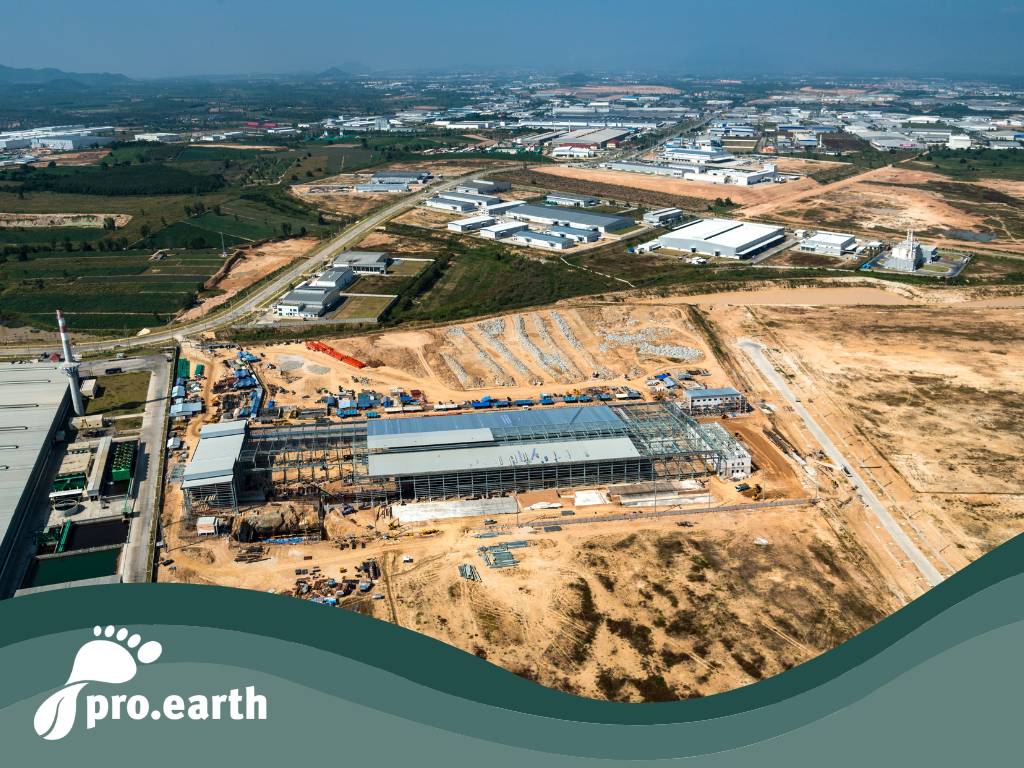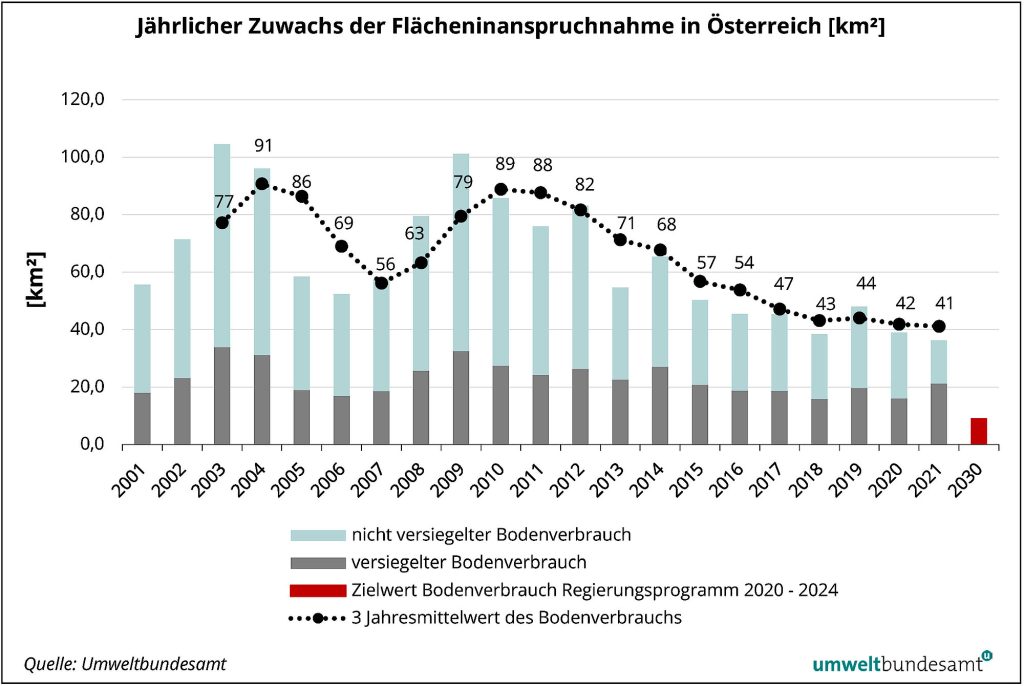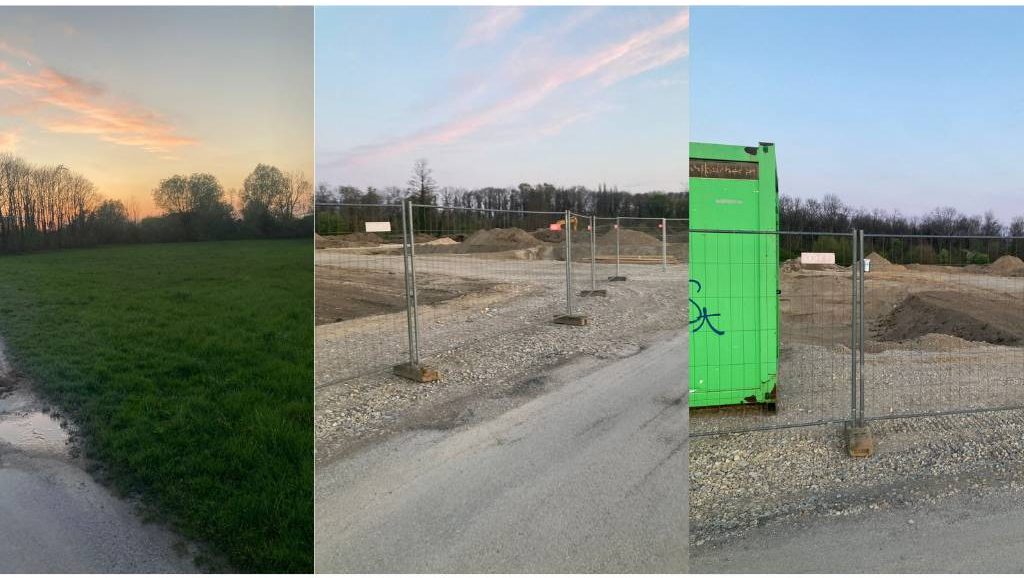Soil sealing - one of the biggest environmental problems

We use far too much land. Sadly, Austria ranks first in the EU when it comes to soil sealing. An area is considered sealed when the soil is covered with a water- and air-impermeable layer, such as concrete or asphalt, which kills off soil life. The resulting problems are manifold.
"Sealing therefore means the permanent loss of biologically productive soil for settlement and transportation purposes, but also for intensive recreational uses, landfills, quarrying areas, industrial plants and similar intensive uses," writes the German Federal Environment Agency.
Fact check
Statistically speaking, on March 21, 2023, we will have already exceeded the official "sustainability target" of a maximum of 2.5 hectares of land consumption per day for the entire year 2023, writes WWF Austria.
We are currently using 12.9 hectares of land per day, which corresponds to around 20 soccer pitches per day. This means we exceed the sustainability target more than fourfold and Austria loses 0.5% of its arable land per year, five times as much as Germany.
But across Germany too, settlement and traffic areas are increasing by 60 hectares per day - the equivalent of around 100 soccer pitches.
The relationship between population growth and soil sealing inAustria is as follows:
- Population growth: 10 %
- New sealing: 24 %
and also shows our excessive appetite for soil, which has unfortunately diminished far too little in recent years.
The major problem areas are, on the one hand
- urban sprawl (e.g. settlements, business parks)
- Road construction (e.g. highways)
- Large-scale projects in open spaces (e.g. ski resorts or hydropower plants)
The area of shopping centers in Austria has more than doubled since 2000 and, with 1.66 square meters of retail space per capita, we are joint European champions with Belgium. And the road network in this country is also one of the densest in Europe.

Problems caused by soil sealing
Lack of humus build-up
Soil life dies off as a result of sealing and is therefore unable to fulfill its normal functions, such as building up humus
Loss of water absorption capacity
One hectare of open ground can store 2,300m3 of water. If the ground is sealed, the water runs off this area, collects in cellars etc. and leads to flooding. The recent heavy rainfall events have encouraged this.
Loss of arable land
The more former arable land we cultivate, the less land remains for future generations to grow our food and, in the long run, jeopardizes our food security
Lack of climate storage
The soil is also the largest Co2 store, a climate buffer that allows moisture to evaporate in hot weather and therefore has a cooling function and stores heat in winter. Sealed surfaces heat up much faster in summer than unsealed surfaces.
Loss of biodiversity
More and more animal and plant species are threatened by shrinking habitats. According to the WWF Soil Report 2021, only 7% of Austria's land area can be classified as "very near-natural". The fragmentation of habitats by roads or urban sprawl also leads to problems such as a lack of migratory movements of animal populations, the associated lack of genetic mixing and the creation of so-called island populations.
Less quality of life
According to an analysis by environmental physician Hans-Peter Hutter, soil sealing also has an increasingly negative impact on human health and quality of life. health and quality of life.
Missing filter
During infiltration, the water is cleaned of pollutants through the various layers of soil if the ground is functioning properly. Sealed soil cannot fulfill this function. The water that drains into sewers cannot be used as drinking water without treatment.
Our pro.earth.conclusion: The speed at which we are concreting over our landscape is frightening. We can observe this in our own surroundings every day with astonishment and indignation. The photo was taken on a former field, which is now being converted into a housing estate, in our community. If you ask estate agents, it has been possible to make big money from land speculation and conversions in recent years. This trend must be stopped immediately. Urgent! You would think that we have infinite resources at our disposal, the way things are going at the moment.
Here is an example from our immediate surroundings: A field and a fallow meadow with a few old trees (as in the first picture) became the (second picture)







